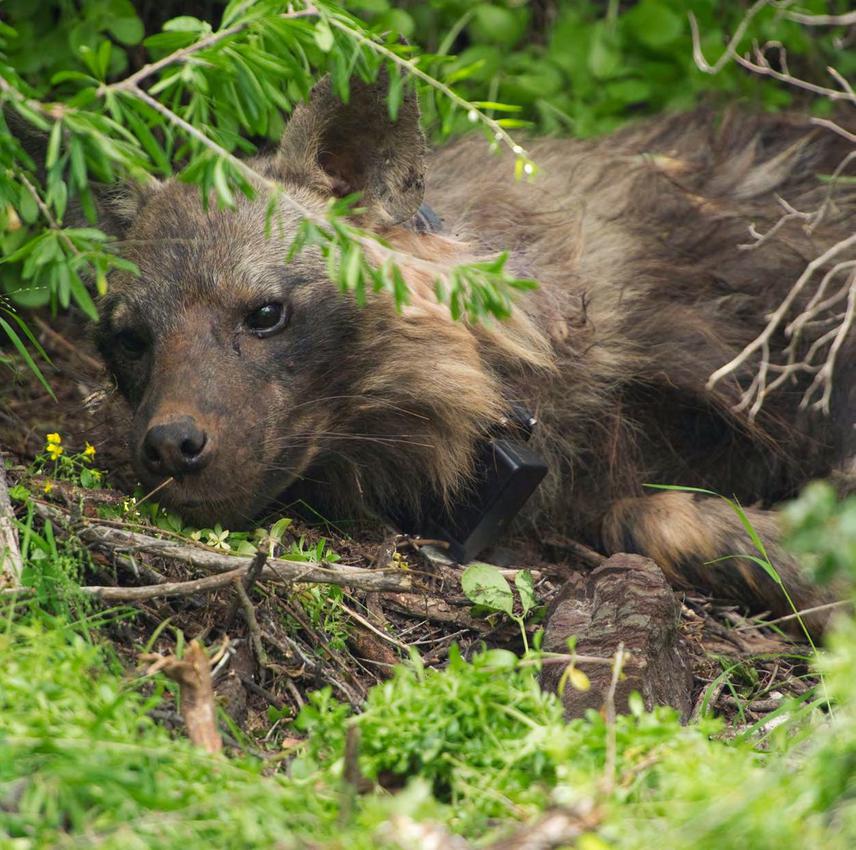Elsa Bussière
The project aims to develop statistical and managerial methods in order to improve the brown hyena conservation locally but also in all agricultural areas where persecution is strong.

Compared to other iconic carnivores we know little about brown hyenas. Consequently, they have often been misunderstood.
Among 70 African carnivores, the brown hyena is listed sixth in terms of conservation importance, according to the method developed by Freitag & van Jaarsveld in 1997. It is a multiple criterion approach to prioritize and rank terrestrial carnivore species.
Brown hyenas have mainly been studied in the Namib and Kalahari deserts. They however occur in other and very different habitats, including the Fynbos and Karoo biomes, where they remain secretive and a challenge for scientists who wish to study them. Being particularly wide ranging, brown hyenas move outside protected areas, onto agricultural land, where domestic animals which die of natural causes are a food source. Brown hyenas are one of the few large predators which can survive outside protected areas and cohabit with humans and livestock. However, strong negative attitudes remain (hunting, trapping and poisoning) which threaten the survival of the species in some areas.
Future updates of the Brown hyena IUCN status will rely on updated population estimates. The latter can be provided by capture-recapture modelling of camera trap data. The conventional capture-recapture models have just started to be tested in the field and do not seem to always provide the research community with an accurate view of the situation. Initial research studies done on South American elusive carnivores (Jaguars and Ocelots) showed that in many cases, especially with wide ranging species, the statistical models prompt inflation in density estimates and result in population size estimates which are exaggerated.
The project, based at Little Karoo, has the following aims:
- Promote human-wildlife coexistence in the western cape, because persecution is the major threat faced by the brown hyena.
- Improve carnivore survey methods for the study of elusive species such as the brown hyena.
- Collaborate with MammalMAP, the African Mammal Atlas Project, to build up the 21st century distribution map of the brown hyena through the involvement of citizen scientists.
- Describe the brown hyena diet by analysing scats, collecting direct observations and using GPS clusters suggesting possible feeding sites.
- Understand the social behaviour of brown hyenas by collecting observations at the den.